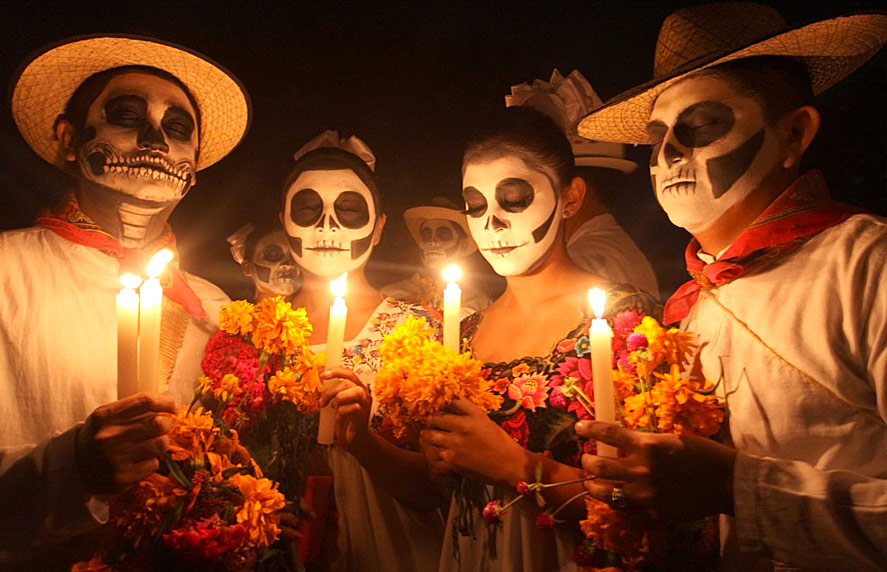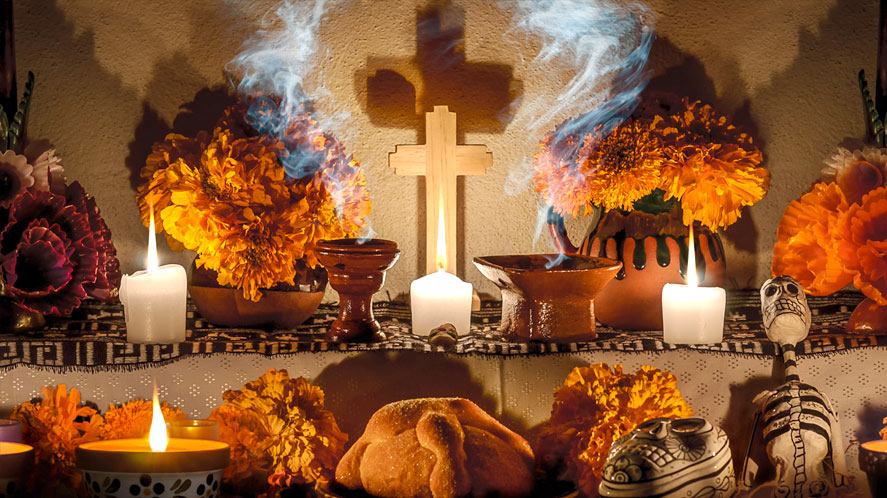
- Date: 26/06/2021
Hanal Pixan
Long before the now famous animated movie “Coco”, Mexico was already known all around the world for its colorful celebrations of “día de muertos”, day of the dead. An ancient Prehispanic tradition that’s celebrated all over the country in different ways, dedicated to those loved ones that have crossed into the next life before us. Celebrated on the last day of October and the first days of November, the day of the dead is an opportunity to remember our loved ones and to celebrate their lives. Hanal Pixan is the name given by the Mayan of the Yucatan peninsula to this unique celebration.
What is it?
Hanal Pixan (pronounced as Janal Pishan) can be translated to english as “Food of the Spirits”. The Mayans celebrate it from October 31st to November 2nd, dedicating each day to a different group of spirits. Although in many places the festivities start days earlier with the preparations for the “altar de muertos”, the altar of the dead.
The first day of the celebrations, October 31st, is known as “u hanan palal” and it is the day dedicated to children. The second day is known as “u hanal nucuch uinicoob” and it is dedicated to adults who passed away. The third and last day of Hanal Pixan is known as “hanal pixanoob” or pixan mass, and it is all saints day which is usually celebrated with a mass or a special ceremony held at the cemeteries.
The tradition includes a few rites but the main and most important of them all is the altar for the dead. Although the altar is an element that is present in all the festivities of the day of the dead, each region of the country has its own way of doing these altars. In the Yucatan peninsula the altars are made of a long table, usually only one level, located under a tree in one’s backyard or at the cemetery near the deceased’s resting place.
The altar is illuminated only by wax candles and it is decorated with photographs of the deceased and x’pujuc flowers (known as cempasuchil in the rest of the country, or as Aztec marigolds in the rest of the world). The deceased is presented with seasonal food, which traditionally consists of: pibes or mucbipollos (a special kind of tamal made only for this date), jicama ( a type of Mexican legume), mandarins, oranges, xec (a salad made mixing jicama, orange, mandarins and powdered chili), sweets, tamales of different flavors and pastries. There are also beverages present in the altar, which must be served in jícaras (small round containers made of a kind of hardshell gourd ), including atole and balché (an alcoholic drink made with the bark of the balché tree). Finally there are two more jícaras, one with water and another one with salt. These protect the spirit from the “evil winds” and help to purify it.
In the case of an altar dedicated to a child, the altar would be decorated with a colorful, handmade tablecloth and toys. Balché is not present in a child’s altar. The food and drink spend all night in the altar and are consumed by the deceased’s family the morning after his/her spirit visit.
It is worth mentioning that sugar skulls and “pan de muerto” (bread of the dead, a traditional Mexican pastry for day of the dead) are not traditional of Hanal Pixan. Despite being adopted by people from all over the country, these elements of day of the dead originated in central Mexico and are not part of the traditional Mayan Hanal Pixan.

Experiencing Hanal Pixan
If you are lucky enough to be in Yucatan between October 31st and November 2nd, or if you’re planning a visit for these special dates, you are going to have the opportunity to live this fascinating tradition. In all cities in Yucatan you will be able to feel the importance of this date and its colorful customs. It is a perfect moment to visit the markets in the cities; you will find them full of festivities and the tradition x’pujuc flowers and seasonal food. The best time to try a delicious mucbipollo. In the main squares of all cities you can commonly find incredible altars dedicated to important and famous characters.
To live Hanal Pixan in full-swing we recommend you visit one of the cemeteries in the city or even better, the cemetery of a small town somewhere outside the city. If you do this we ask you to be as respectful as possible when observing this tradition. However, you will soon see that many families are willing and happy to share the festivities with curious travelers.
If you are visiting Cancún or the Riviera Maya instead, we urge you to go the festival “Vida y Muerte” in Xcaret Ecopark. Between October 31st and November 2nd you will be able to experience authentic celebrations of Hanal Pixan and other day of the dead traditions of every state in the country.
Come to visit us during this important times to learn that death is just the beginning of the next life and be part of an unforgettable celebration.
